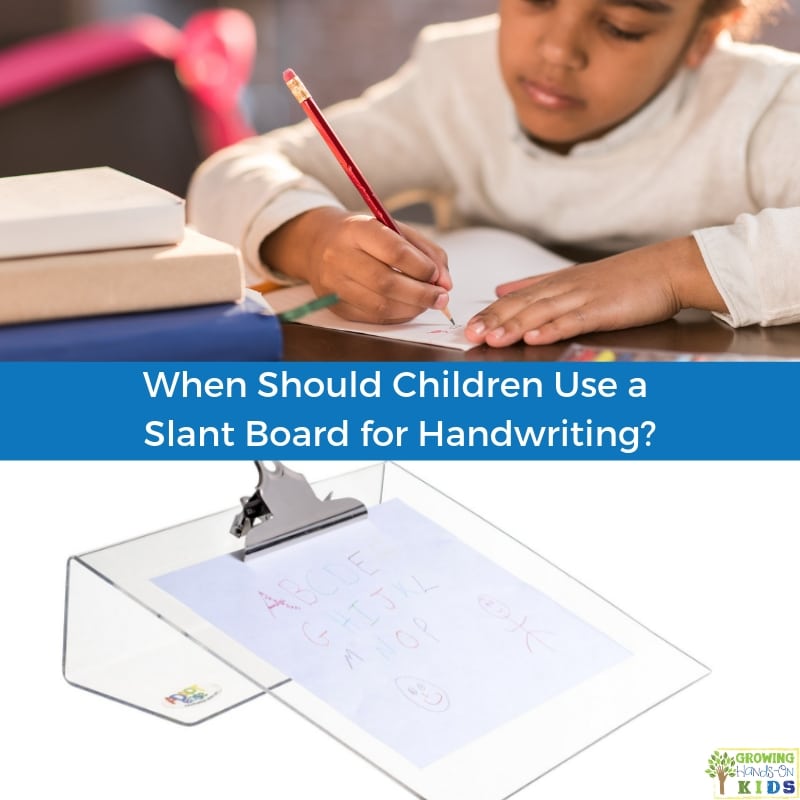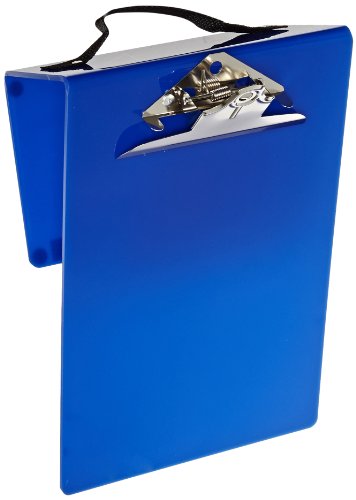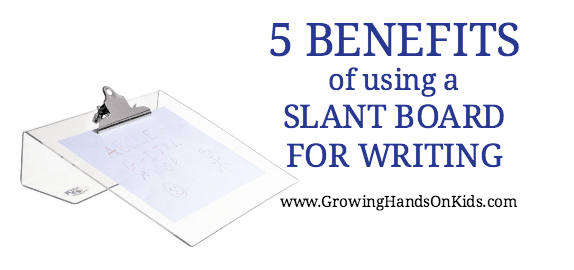When Should Children Use a Slant Board for Handwriting?
Affiliate and Referral links are used below to promote products I love and recommend. I receive a commission on any purchases made through these links. Please see my disclosure policy for more details. As an Amazon Associate, I earn from qualifying purchases.
A popular therapeutic strategy for handwriting concerns is the use of a slant board. Could it be the right solution for a child who is struggling with handwriting? Let's take a look at when you should consider having a child use a slant board for handwriting.
When to Consider a Slant Board for Handwriting
You may want to consider a slant board when you notice any of the following during handwriting.
|| Poor Posture
The optimal sitting position should be sitting with 3 points of a 90-degree angle: Feet planted flat on the ground, ankles at a 90-degree angle, knees bent at 90 degrees; sitting upright with the hips and torso at a 90-degree angle. When a child is slouching, using a slanted board at a 22-degree angle can assist with this positioning. Also remember if your child's feet are not touching the floor, use a stack of books or a step stool to help get their knees and feet at that 90-degree angle.
A child who is slouched over while writing will not produce legible work and often this is caused by fatigue because of poor core muscle strength. While working on increasing core muscle strength, using the slant board for writing can promote good upper body positioning for handwriting tasks.
|| Poor Visual Tracking
Visual tracking is the ability to move the eyes from left to right, right to left, up and down, or in a circular motion. This is important for reading and writing. Reading at an angle may reduce strain on the eyes. Positioning their written or reading work at an angle may reduce eye strain and allow for improved visual tracking.
|| Poor Pencil Grasp
The idea of using a slant board to improve pencil grasp has to do with the wrist position. In order to produce legible written work, a student needs to be able to move their wrist and elbow in a fluid motion. The wrist needs to be in an extended or up-bent position. The slant board encourages this wrist extension during writing.
|| Poor Copying Skills
Being able to copy from the board in front of you or a book requires good visual tracking and visual-motor skills. Elevating the writing surface can help with positioning, grasp, and tracking as mentioned above can help improve copying skills.
Other Points to Remember with Slant Boards
It is important to remember that the use of a slant board alone will not magically help a child's handwriting. There is limited research on the effectiveness of slant boards, especially when used as a stand-alone strategy to improve handwriting. (Brevoort, 2017). More research needs to be done.
It is also important to look at other factors including underlying conditions that could be contributing to poor handwriting.
We also need to look at the consistency and length of use when assessing if a strategy is working for our students or children. Often times, a strategy or approach needs to be assessed over a longer period of time to gauge its effectiveness.
We do know that multi-sensorimotor approaches help students with below-average handwriting scores. And addressing the environment and posture during handwriting can improve handwriting overall.
If you feel your child or student needs help with their handwriting, please ask for an Occupational Therapy evaluation to address any underlying needs and assess the best course of action.
Where to Get a Slant Board for Handwriting
Here are some places you can purchase a slant board to use with your children.
You can also make your own DIY version by placing a 3-ring binder on its side. You can find the complete tutorial here at The OT Toolbox.
Adapt-Ease Ergonomic Writing Slant Board, WhiteAcrylic Ergonomic Writing Slope, Fully Transparent, Extra Wide for Better Writing Posture, 20 Degree Angle, Anti Slip with Pen Holder – Educational & SEN Resource – by Playlearn (Yellow)Visual Edge Slant Board (Blue), A Sloped Work Surface for Writing, Reading, Art and Speech for Optimal Learning – Portable Desktop Magnetic Dry Erase White Board with Clipboard for KidsAbilitations SlantScript Board, Blue, 9 x 14 inchesSlant Board from the Therapy Shoppe
Resources
Kristen N. Brevoort. 2017. Effect of Slant Boards in Combination with Handwriting Practice. Doctoral dissertation. Nova Southeastern University. Retrieved from NSUWorks, . (58) https://nsuworks.nova.edu/hpd_ot_student_dissertations/58.
Ranade, Dipti. (2019). The effect of a vertical line template and a slant board on printing of children with handwriting difficulties [electronic resource] /. Click here to read.
Weichman, L. Benefits of a Slant Board. North Shore Pediatric Therapy. https://nspt4kids.com/parenting/benefits-of-a-slant-board/

Heather Greutman, COTA
Heather Greutman is a Certified Occupational Therapy Assistant with experience in school-based OT services for preschool through high school. She uses her background to share child development tips, tools, and strategies for parents, educators, and therapists. She is the author of many ebooks including The Basics of Fine Motor Skills, and Basics of Pre-Writing Skills, and co-author of Sensory Processing Explained: A Handbook for Parents and Educators.









